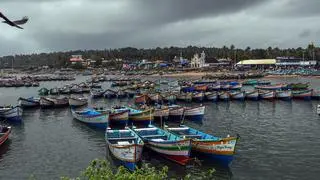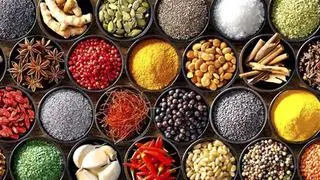Rice production growth in Bangladesh and Nigeria coupled with crop recovery in Cambodia, Myanmar, Pakistan, Sri Lanka and the US will likely make up for shortfalls in Brazil, Indonesia and Thailand, as well as output stagnation in India and China, (mainland) in the 2023-24 season starting September, the Food and Agriculture Organization (FAO) has said.
In its Rice Update for September today, the UN’s agricultural arm said no major disruptions to cropping activities to date could pave the way for recovery in rice production.
The FAO said should India’s export restrictions continue, its rice exports will decline to a four-year low of 16.3 mt in 2023-24 and, in turn, cut the export surplus in Brazil, Uruguay and Vietnam in 2024-25, the FAO said.
No growth again
It said current indications point to a second successive season of little to negative growth in world rice utilisation in 2023-24, which could stagnate at around 520.9 mt(milled basis). Among the various use components, the outlook is most downcast for animal feed uses.
Given that more economically viable feed alternatives are available, feed utilisation will likely drop further to 21 mt from 18.5 mt. Rice for food consumption is forecast to increase by 0.7 per cent year-on-year to 425.6 mt, the UN agency said.
FAO’s latest forecast suggests that world rice production could amount to 523.2 million tonnes (mt) in 2023-24. “Although this level would fall short of the record harvest of 2021-22, it would still represent a 1.1 per cent recovery from the 2022-23 reduced level and an overall ample harvest,” it said.
Index at 15-year high
The forecast comes amid FAO rice price index increasing by 9.8 per cent in August to 142.4 points. “At that level, the Index stood 31.2 per cent above its year-earlier value and at a 15-year nominal high,” it said.
The index was up 11.8 per cent over July, reflecting trade disruptions following India’s ban on white rice exports on July 20. “Nevertheless, glutinous quotations also climbed by 13.8 per cent month-on-month on concerns over the impact of irregular rains on production in Thailand and following a revival in Chinese glutinous demand,” the FAO said.
On the demand side, continued purchases by Indonesia’s Bulog and news of the Philippines’ Government re-embarking on imports after a multi-year hiatus also provided underpinning.
This was amid heightened uncertainties and buyers being put-off by the upswings in prices. “August trade was otherwise largely confined to small volumes or to executing previously contracted sales.” the organisation said.
Vietnam witnessed a more pronounced increase in its rice prices with quotes of 5 per cent broken rising by $110 a tonne over July rates to touch a 15-year high.
El Nino challenge
“Monthly price increases were in the order of $60-80 per tonne in other Asian origins. This placed Asian quotations of (non-fully broken) Indica white rice between 40 and 60 per cent above their August 2022 values,” the FAO said.
On the demand supply prospects for 2023-24, the UN body said the progress of the season to date has not been without its challenges, particularly on the weather front and often due to the influence of the March-ended La Nina phenomenon and the June emergence of the El Nino event.
At the same time, seasonal progress suggests that main-crop plantings in various important global rice producers have remained robust, if not expanded. This could help compensate for, if not outweigh, yield depressions stemming from uneven rains or planting cuts of 2023-24 offseason crops, to be sown as of the last quarter of the year in the northern hemisphere, it said.
Discussing India’s rice export curbs, the FAO said a modest annual trade recovery envisaged for 2024 “is primarily anticipated to be sustained by larger shipments from Pakistan and Thailand, although improved supply conditions are also envisaged to enable Cambodia, Myanmar and the US to step up shipments in 2024”.








Comments
Comments have to be in English, and in full sentences. They cannot be abusive or personal. Please abide by our community guidelines for posting your comments.
We have migrated to a new commenting platform. If you are already a registered user of TheHindu Businessline and logged in, you may continue to engage with our articles. If you do not have an account please register and login to post comments. Users can access their older comments by logging into their accounts on Vuukle.